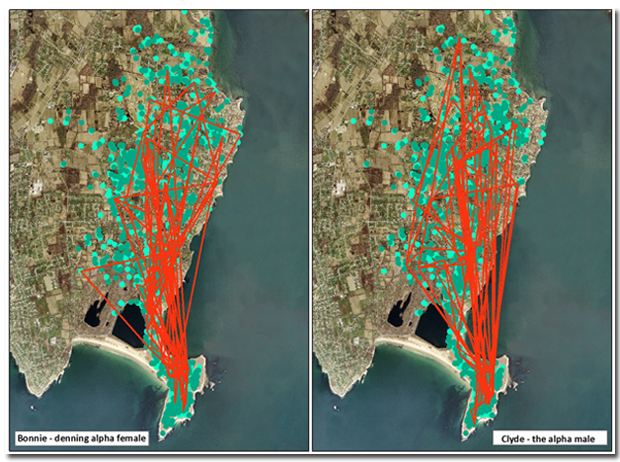 A territory is an area defended and exclusively used by a group, or pack of, resident coyotes. A territory’s size is determined by available food resources and will be as big as necessary to support the family group. A territory is different from a home range in that it brings out aggressive defensive behavior, whereas a home range is simply the area in which the coyotes live.
A territory is an area defended and exclusively used by a group, or pack of, resident coyotes. A territory’s size is determined by available food resources and will be as big as necessary to support the family group. A territory is different from a home range in that it brings out aggressive defensive behavior, whereas a home range is simply the area in which the coyotes live.
NBCS coyote packs have territories that are as large as needed to support the pack members. Even when caring for pups in a den several kilometers away, coyotes make sure to patrol all parts of their territory. This can be seen in the weekly movements (we connected the dots) of Bonnie and Clyde while caring for young puppies in early spring. They both patrolled the territory but frequently returned to the pups which were waiting in a den on Sachuest Point.
Coyotes existing on primarily natural foods (voles, woodchucks, geese, squirrels, deer, and fruit) have larger territories (10km2). Coyote packs that are subsidized are smaller (3km2) and have more packmembers.
It is typical for territories of animals to be smaller than, and contained within, the home range. However, in the case of our NBCS packs some of the terrritories are as large as the home range. It is clear that every part of the home range is defended because other coyotes stay out. This is why resident coyotes are the best defense against other coyotes. They are vigilent about keeping trespassers out.


